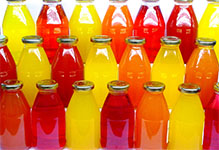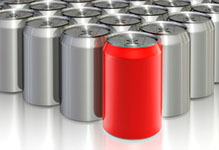Packaging Equipment
Beverages in the market today come in various shapes and sizes. Several packaging options for beverages are available not only to differentiate one from the other or for aesthetic purposes, but more importantly to protect the products’ integrity. Also, appropriate beverage packaging promotes longer shelf life and safety. This also provides helpful information to consumers regarding content and other important details such as production and expiration dates. This is the main reason why packaging equipment is commonly specialized or modified accordingly for a specific product or brand.
Basic Types of Equipment Used For Beverage Packaging
Some of the common packaging equipment types used for this industry include:
- Filling Machines
Just as the name suggest, filling machines put the beverage formula into their respective containers. Several options for beverage filling machines are available. The type of filling equipment used depends on the beverage to be contained. Some examples of these are pressure fillers, vacuum fillers, siphon fillers, piston filling machines and other types of volumetric filling systems.
- Labeling Equipment
As with filling machines, labeling equipment comes in a number of configurations depending on the type of container that needs labeling. Examples of which include top labeler, bottom labeler, wrap labeler, front and back labeler, print and apply labeler and so forth. They are further differentiated on the process by which they apply those labels. These are pressure sensitive labelers, hot melt glue labelers, cold glue labelers, shrink sleeve labelers and several others.
- Capping Machines
This types of packaging equipment is used for beverages which utilize caps or lids to seal off contents. Various types are also available including cap tighteners, automatic screw cappers, snap cappers and lidding equipment.
- End Of Line Packaging Machines
This type includes equipment used for packaging case erectors, case sealers and palletizers are used on batches of finished products to properly and effectively organize, seal and transport them for distribution.
Though several factors are taken into consideration in choosing packaging and packaging equipment for beverages, efficiency still plays an important part. Using less packaging as much as possible is ideal to minimize wastes and production costs. Utilizing recycled materials for packaging or having a reusable container will also be beneficial not only for business owners but to consumers and the environment in general.
Beverages



